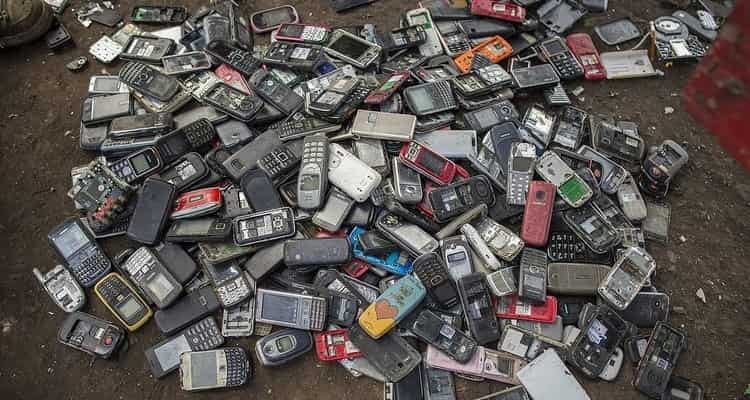Newer phones may have been introducing greener and greener features, but there is nothing green as to what happens to your phone after you throw it away to upgrade to new.

In a previous post, we talked about the fact that discarded phones that find their way into landfills aren’t left to sit in a garbage pile. There are precious metals in these such as steel, aluminum, and gold, and these are often sold to unregistered processors who “smelt” the old handsets. The smelting process conveniently separates the metals, but the reaction also releases extremely toxic chemicals into the land, air, and water that pollute and endanger entire environments.
But that is only half the story. As much as there are environmental costs, there are also human costs to smelting. While e-waste like your old phone is more or less generated in developed countries, its impact is most felt in developing/underdeveloped nations who are paid to take the waste stream into their communities.
A walk through the e-waste dumps like Agbobloshie in West Africa would give a clear picture with regard to the social and environmental costs of unmitigated e-waste generation. The people here “cook” circuit boards for a living, at the risk of their health. But don’t stay too long, or you might be exposed to the lead, cadmium, and mercury in the air and on the ground to your detriment.
The sad part is, there is currently little to no real alternative to smelting. Save for the few registered smelters out there who do their best to recover what they need while minimizing the impact of the process to the environment, there are only ever shady entrepreneurs who buy discarded phones and sell them to individual smelters like those in Agbobloshie.

As yet, there is no heaven for your iPhone, where it can rest in peace without harming anybody. So the only real option we have to stem the building tide of e-waste and the human and environmental costs that it brings is to reuse and refurbish.
We would do well to take a stand by rejecting the planned obsolescence built into our phones and insist on our right to repair; and in our individual lives, use or upgrade to refurbished phones.





